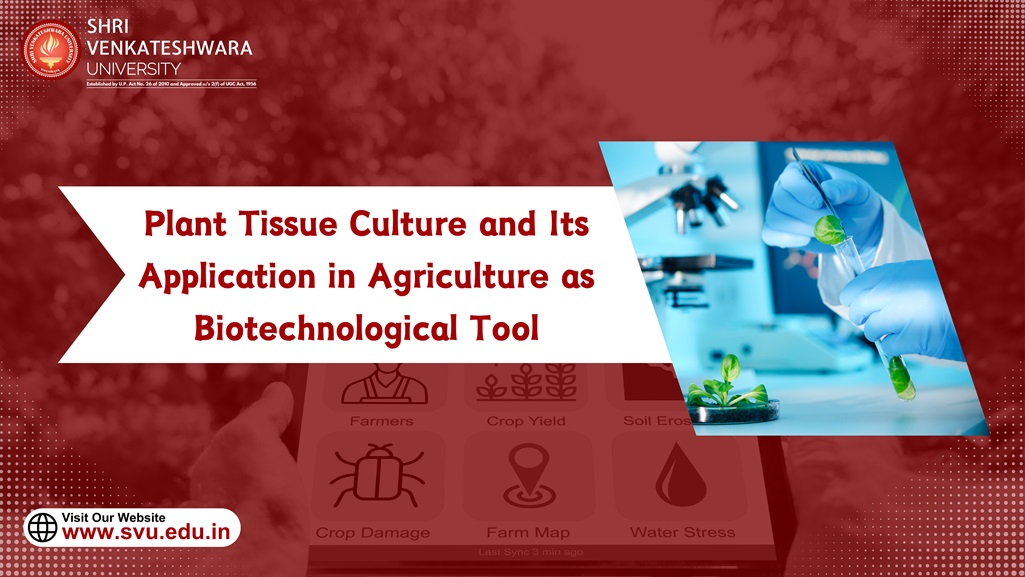
In the very fast developing scenario of biological science, the plant tissue culture has taken lead because it is the most promising areas of biotechnological tools for today and tomorrow agriculture. The areas range from micro propagation of horticultural crops, ornamental and forest trees etc. Over the100 years ago, Haberlandt envisioned the concept of plant tissue culture and provided the bottom work for the cultivation and production of plant cells, tissues and organs in culture. Due to the changes in consumption patterns, demand for fruits, vegetables, dairy, meat, poultry, and fisheries has been increasing. Hence, a need to raise crop diversification and improve allied activities. Plant tissue culture technology is being widely used for large scale plant multiplication. Apart from their use as a tool of research, plant tissue culture techniques have in recent years, become of major industrial importance in plant propagation, disease elimination, plant improvement and production of secondary metabolites. Small pieces of tissue (named explants) can be used to produce hundreds and thousands of plants in a continuous process. A single explant can be multiplied into several thousand plants in relatively short time and space under controlled conditions, irrespective of the season and weather on a year-round basis. Endangered, threatened, and rare species have successfully been grown and conserved by micro propagation because of high coefficient of multiplication and small demands on number of initial plants and space.
Methods of plant tissue culture
Micropropagation: which is a form of tissue culture, increases the amount of planting material to facilitate distribution and large-scale planting. In this way, thousands of copies of a plant can be produced in a short time. Micro propagated plants are observed to establish more quickly, grow more vigorously and are taller, have a shorter and more uniform production cycle, and produce higher yields than conventional propagules.
Stage 0: Preparation of donor plant: To enhance the probability of success, the mother plant should be ex vitro cultivated under optimal conditions to minimize contamination in the in vitro culture.
Stage I: Initiation stage: In this stage an explant is surface sterilized and transferred into nutrient medium. The selection of products depends on the type of explant to be introduced. The surface sterilization of explant in chemical solutions is an important step to remove contaminants with minimal damage to plant cells.
Stage II: Multiplication stage: This phase is to increase the number of propagules under which the number of propagules is multiplied by repeated subcultures until the desired number of plants is attained.
Stage III: Rooting stage: The rooting stage may occur simultaneously in the same culture media used for multiplication of the explants. However, in some cases it is necessary to change media, including nutritional modification and growth regulator composition to induce rooting.
Stage IV: Acclimatization stage: At this stage, hardening is done gradually from high to low humidity and from low light intensity to high light intensity. The plants are then transferred to an appropriate substrate (sand, peat, compost etc.) and gradually hardened under greenhouse.
Use of biotechnology tools in plant tissue culture
Biotechnology has been introduced into agricultural practice at a rate without precedent. Tissue culture allows the production and propagation of genetically homogeneous, disease-free plant material. Interventions of biotechnological approaches for in vitro regeneration, mass micropropagation techniques and gene transfer studies in tree species have been encouraging. Genetic transformation technology relies on the technical aspects of plant tissue culture and molecular biology for:
- Production of improved crop varieties
- Production of disease-free plants (virus)
- Genetic transformation
- Production of secondary metabolites
- Production of varieties tolerant to salinity, drought, and heat stresses